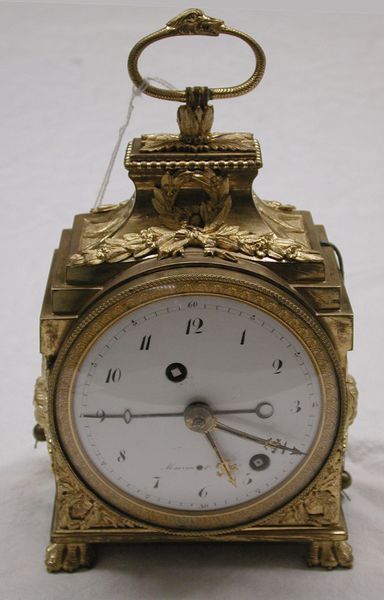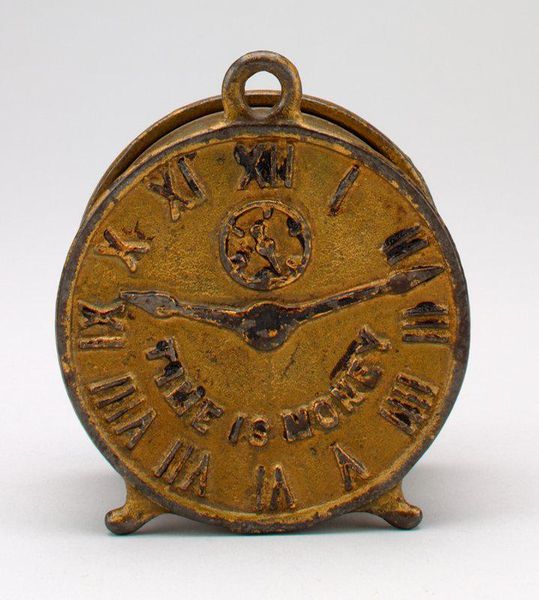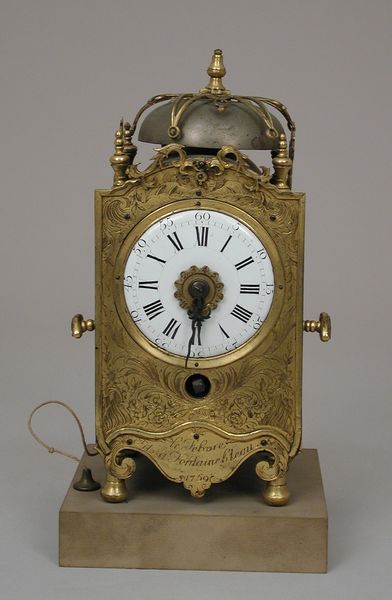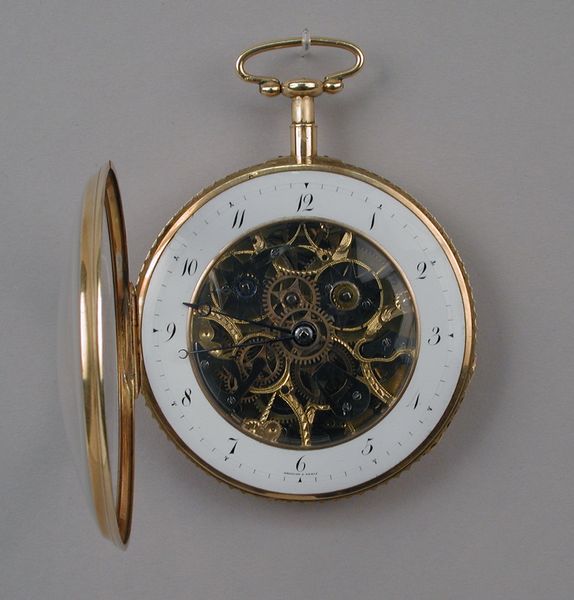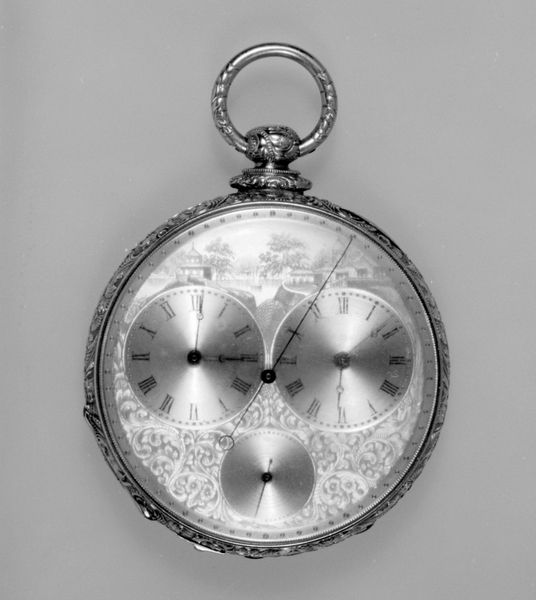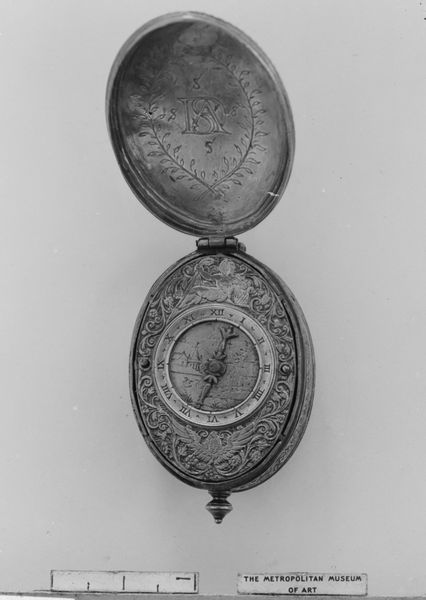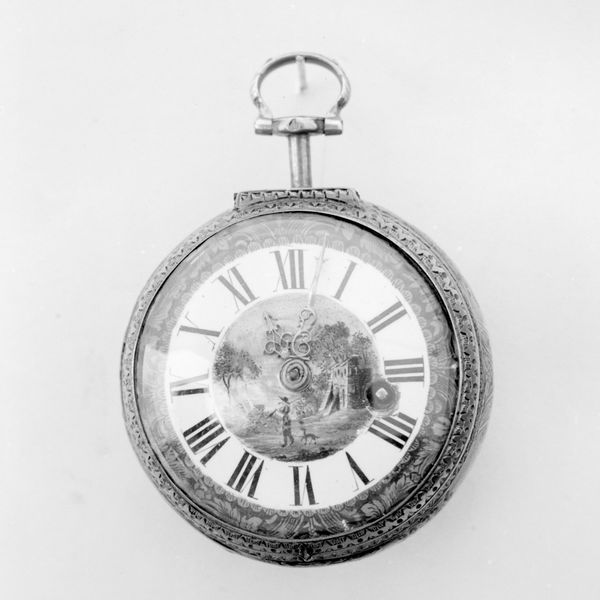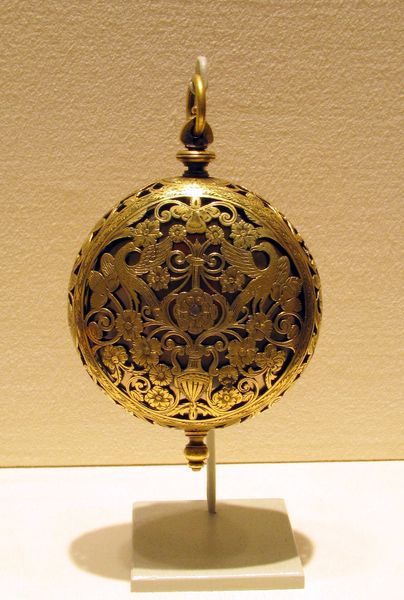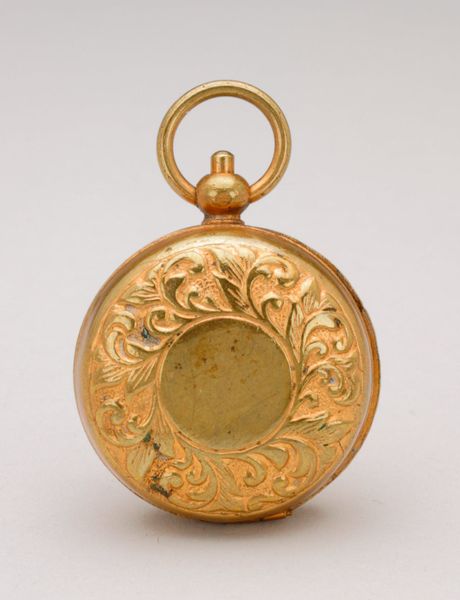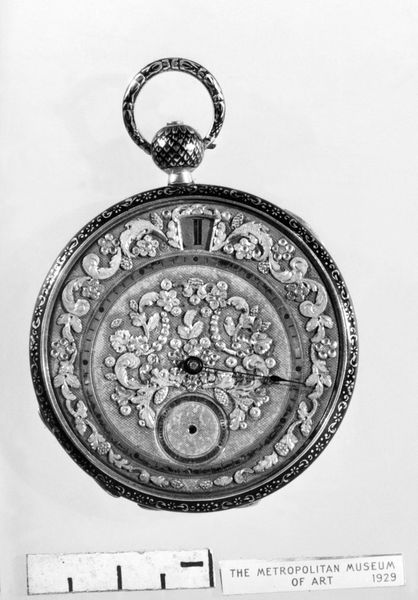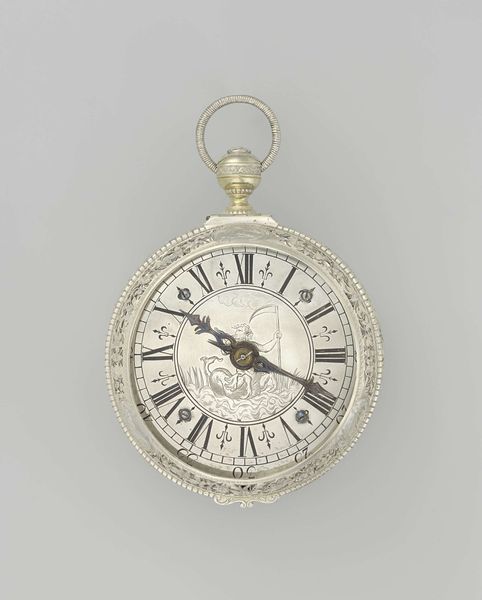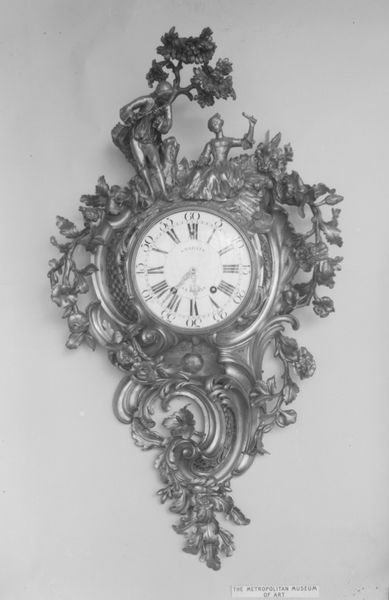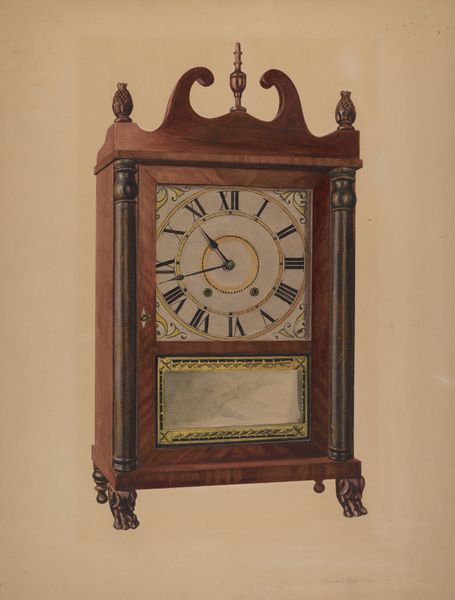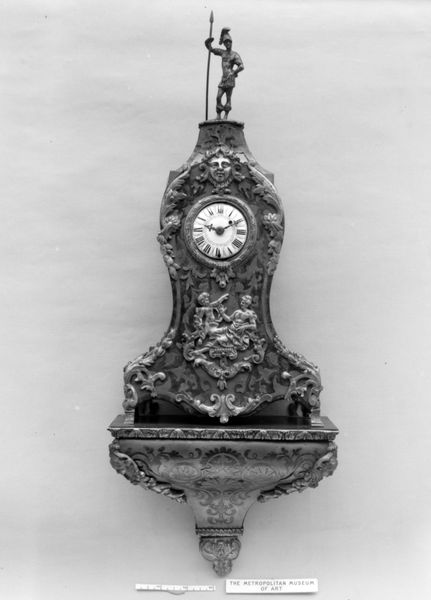
metal, sculpture
#
decorative element
#
baroque
#
metal
#
sculpture
#
decorative-art
Dimensions: Diameter: 2 in. (5.1 cm)
Copyright: Public Domain
Curator: The object before us, crafted between 1657 and 1699, is simply titled "Watch." It currently resides here at the Metropolitan Museum of Art. The craftsmanship demonstrates baroque and decorative art styles. Editor: Right, first impression? I feel like I've stumbled into some eccentric inventor's workshop. It's steampunk before steampunk even existed! It’s ornate but skeletal, a little perverse maybe – showing all its inner workings. Curator: Perverse, an intriguing characterization. The watch, realized in metal, with a partially transparent cover allows full view into the functionality of timekeeping itself. Note how the maker reveals rather than conceals. Editor: Exactly! It’s a dance of cogs and springs, all gilded and precious, but ticking away with such relentless purpose. It’s less about telling the time and more about celebrating—or perhaps warning about—its passage. Do you see how the Baroque love of ornamentation complicates it? It could simply be a display of technical know-how...but something feels more philosophical, maybe darker. Curator: The overt display aligns quite powerfully with Baroque sensibilities – revealing truth through complexity. It's not merely decorative; the layers of details guide contemplation. I suggest we examine the concentric forms… see how they reflect and refract light, directing the viewer’s gaze inwards? Editor: True! And the choice of precious metals -- gold, specifically -- against these precise, almost scientific forms? That’s what tickles me, right there. A meditation on our obsession with capturing something fundamentally un-capturable, maybe. Time, truth, whatever. Curator: Precisely! As a crafted object, the Watch represents a unique nexus: artistry, utility, and the metaphysical concept of time converge in this diminutive metal sculpture. I find that, in the context of Baroque aesthetic philosophy, it is really exemplary of it’s period and approach to material exploration. Editor: Well said! Seeing it broken down that way is amazing. Suddenly that ticking clockwork soul isn’t quite so perverse—maybe just profoundly, beautifully… haunted. Thanks for lending some insight.
Comments
No comments
Be the first to comment and join the conversation on the ultimate creative platform.
